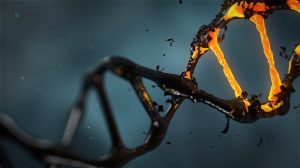CRISPR-Cas9: Opening Pandora’s Box

In Greek mythology, the first woman Pandora, driven by curiosity, opens a box given to her husband Epimetheus by Zeus, king of the gods. She ends up setting loose all sorts of miseries on the world, becoming the source of humanity’s unhappiness.
In some ways, this tale may come to parallel that of Chinese scientist He Jiankui, who claimed last week to have performed gene editing in human embryos using CRISPR-Cas9 technology, and more importantly, that these embryos were brought to term, leading to the birth of twin girls, named Lulu and Nana.He claimed that both girls are healthy, but frankly it’s too early to tell.
The scientific community has been in an uproar over He’s experiment. Although there hasn’t been a global moratorium on gene editing in humans, the consensus among scientists has been to steer clear of doing so, because the risks and implications of applying CRISPR-Cas9 in humans are still not fully understood. Furthermore, society in general has yet to come to terms with the social and cultural consequences of permitting gene-edited humans among us. While I think while many people would be fine with using gene editing to prevent genetic diseases, for others it’s one step on a slippery slope towards human enhancement, and a Brave New World-esque dystopia.
What’s the fuss?
The main issue behind He’s experiments is primarily the ethics, or rather lack thereof.
Firstly, He used gene editing to mimic the effect of a naturally-occurring deletion in a gene named CCR5 – which protects against HIV infection, the reason being that Lulu and Nana’s father was HIV-positive, and there was a risk that the infection would be passed on to his children.
Except there was never a need to employ such a radical method to prevent HIV infection in the children. Other methods of doing so, which are effective and have less health risks attached, have already been developed. It’s one thing to use gene editing to prevent a potentially life-threatening disease for which no therapeutic or preventive interventions are available, it’s another to run the risks of gene editing when safer methods do exist.
Secondly, CRISPR-Cas9 can produce unintended (also called “off-target”) changes in the genome. It’s hard to predict the potential health problems that might arise from these changes, and foisting them on another human being is unthinkable.

It is possible to avoid problems arising from off-target effects by screening the embryos using DNA sequencing to ensure that only the intended edit takes place, and that no unwanted changes occurred after editing,as He has done. But at the same time, he showed that the edits didn’t produce quite the same mutation as the naturally-occurring protective one. One of the twins still carries an intact CCR5, while the other shows mosaicism (meaning that some of her cells have the intact CCR5), leaving them vulnerable to HIV infection after all. One has to wonder what the point of the sequencing was – why implant the embryos when he knew that the edit wouldn’t provide the protective effect, which he claimed was the aim of the experiment?
There are many other questionable issues that have arisen since He’s claim surfaced , and his recent talk at the Second International Summit of Gene Editing has only raised more questions than answers. To top it all off, He has also disappeared – one can only speculate on the reasons why. All in all, the lack of transparency and cavalier attitude in the entire affair is a far cry from what the scientific community hoped for in the first case of gene-edited babies, nor is it going to inspire much confidence in the gene-editing community among the general public.
To be clear, CRISPR-Cas9 gene editing has a lot of potential for good. I personally believe that if we have the ability to protect future generations from genetic diseases, we have a moral imperative to use them. But at the same time, the technology carries its own risks, and deciding to perform this experiment, without giving due consideration to the trade-offs that have potentially grave implications for two innocent human beings – as He has done – is not acceptable.